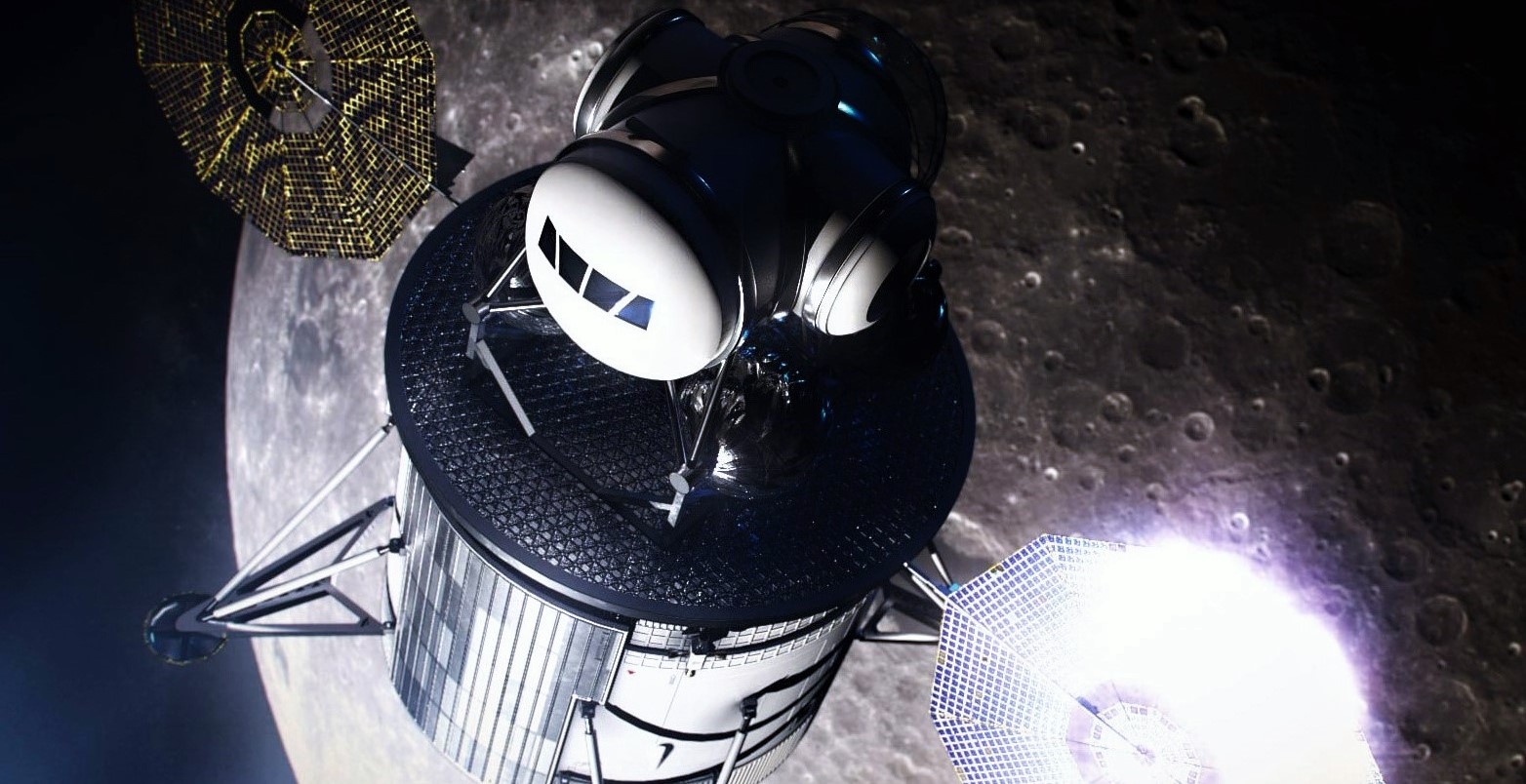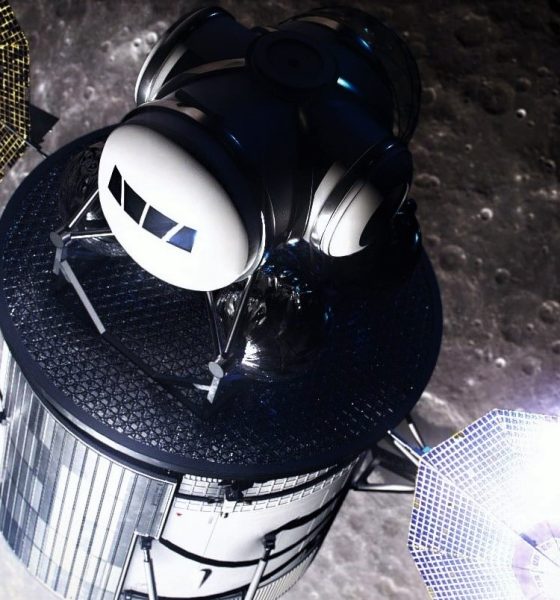

News
SpaceX wins NASA funds to study a Falcon Heavy-launched Moon lander
NASA has announced a series of awards as part of its 2024 Moon return ambitions, providing up to $45.5M for 11 companies to study lunar landers, spacecraft, and in-space refueling technologies.
Among those selected for studies are SpaceX, Blue Origin, Masten Space, and the Sierra Nevada Corporation, alongside usual suspects like Boeing and Lockheed Martin. The chances of NASA actually achieving a crewed return to the surface of the Moon by 2024 are admittedly minuscule. However, with the space agency’s relatively quick three-month turnaround from accepting proposals to awarding studies, those chances of success will at least be able to continue skirting the realm of impossibility for now. In fact, SpaceX believes its Moon lander could be ready for a lunar debut as early as 2023.
Do the OldSpace Limbo!
Almost exactly 90 days (three months) since NASA released its lunar lander request for proposal (RFP), the 11 US companies selected for awards can now begin mature their designs, concepts of operations, and even build prototypes in a select few cases. At least based on the volume of awards and prototypes funded, the bulk of the $45.5M available for these studies unsurprisingly appears to have gone to Boeing and Lockheed. The duo of military-industrial complex heavyweights have maintained a decades-old stranglehold over NASA’s human spaceflight procurement.
In the last 13 years, the companies – combined – have carefully extracted no less than $35B from NASA, all of which has thus far produced a single launch of a half-finished prototype spacecraft (Orion) on a contextually irrelevant rocket (Delta IV Heavy) in 2014. The SLS rocket and Orion spacecraft remain almost perpetually delayed and are unlikely to complete their uncrewed launch debut until 2021, if not later.

SpaceX enters the lunar lander fray
“SpaceX was founded with the goal of helping humanity become a spacefaring civilization. We are excited to extend our long-standing partnership with NASA to help return humans to the Moon, and ultimately to venture beyond.”
– SpaceX President and COO Gwynne Shotwell
SpaceX was one of the 11 companies to receive NASA funding for a lunar lander-related design study. By all appearances, the company has been analyzing this potential use-case for some time. What they offer is significantly more complex than what NASA’s press release described as “one descent element study”. First and foremost, however, it must be stressed that these NASA funded studies – particularly those relegated to design, with no prototype builds – are really just concepts on paper. The NASA funding will help motivate companies to at least analyze and flesh out their actual capabilities relative to the task and time frame at hand, but there is no guarantee that more than one or two of the 11 studies will translate into serious hardware contracts.
Regardless of the many qualifications, SpaceX’s proposed descent module (i.e. Moon lander) is undeniably impressive. If SpaceX were to win a development contract, the lander would be based on flight-proven Falcon 9 and Crew Dragon subsystems wherever possible, translating into a vehicle that would have significant flight heritage even before its first launch. That first Moon landing attempt could come as early as 2023 and would utilize the performance of SpaceX’s own Falcon Heavy, currently the most powerful rocket in operation.
No renders have been released at this stage but it’s safe to assume that a SpaceX Moon lander would be somewhat comparable to Blue Origin’s just-announced Blue Moon lander, capable of delivering ~6.5t (14,300 lb) to the lunar surface. Rather than hydrogen and oxygen, SpaceX would instead use either Crew Dragon’s NTO/MMH propulsion or base the lander on Falcon 9’s extremely mature liquid kerosene/oxygen upper stage and Merlin Vacuum (MVac) engine.
Impressively, the SpaceX lander would aim for nearly double Blue Moon’s 6.5t payload capability, delivering as much as 12t (26,500 lb) to the surface of the Moon. That payload could either enable an unprecedentedly large crew capsule/ascent vehicle or permit the delivery of truly massive robotic or cargo payloads. Additionally, SpaceX believes that a descent stage with the aforementioned capabilities could potentially double as an excellent orbital transfer stage, refueling tug, and more. The lander would also serve as a full-up testbed for all the advanced technologies SpaceX needs to enable its goals of sustainable, reliable, and affordable solar system colonization.


Time will tell if NASA is actually serious about upsetting the status quo and getting to the Moon quickly and affordably, or if they will instead fall back on well-worn habits shown to minimize results and maximize cost. The White House recently proposed an additional $1.6B be added to NASA’s FY2020 budget, inexplicably choosing to take those funds from the federal Pell Grant system, which helps more than five million underprivileged Americans afford higher education. Regardless of the sheer political ineptitude involved in the proposed funding increase, even $1.6B annually (the WH proposal is for one year only) would be a pittance in the face of the spectacular inefficiencies of usual contractors Boeing and Lockheed Martin.
The telltale sign of which direction NASA’s lunar ambitions are headed will come when the agency begins to award actual development and hardware production contracts to one or several of the proposals to be studied. Stay tuned!
Check out Teslarati’s Marketplace! We offer Tesla accessories, including for the Tesla Cybertruck and Tesla Model 3.

Elon Musk
Elon Musk confirms xAI’s purchase of five 380 MW natural gas turbines
The deal, which was confirmed by Musk on X, highlights xAI’s effort to aggressively scale its operations.

xAI, Elon Musk’s artificial intelligence startup, has purchased five additional 380 MW natural gas turbines from South Korea’s Doosan Enerbility to power its growing supercomputer clusters.
The deal, which was confirmed by Musk on X, highlights xAI’s effort to aggressively scale its operations.
xAI’s turbine deal details
News of xAI’s new turbines was shared on social media platform X, with user @SemiAnalysis_ stating that the turbines were produced by South Korea’s Doosan Enerbility. As noted in an Asian Business Daily report, Doosan Enerbility announced last October that it signed a contract to supply two 380 MW gas turbines for a major U.S. tech company. Doosan later noted in December that it secured an order for three more 380 MW gas turbines.
As per the X user, the gas turbines would power an additional 600,000+ GB200 NVL72 equivalent size cluster. This should make xAI’s facilities among the largest in the world. In a reply, Elon Musk confirmed that xAI did purchase the turbines. “True,” Musk wrote in a post on X.
xAI’s ambitions
Recent reports have indicated that xAI closed an upsized $20 billion Series E funding round, exceeding the initial $15 billion target to fuel rapid infrastructure scaling and AI product development. The funding, as per the AI startup, “will accelerate our world-leading infrastructure buildout, enable the rapid development and deployment of transformative AI products.”
The company also teased the rollout of its upcoming frontier AI model. “Looking ahead, Grok 5 is currently in training, and we are focused on launching innovative new consumer and enterprise products that harness the power of Grok, Colossus, and 𝕏 to transform how we live, work, and play,” xAI wrote in a post on its website.
Elon Musk
Elon Musk’s xAI closes upsized $20B Series E funding round
xAI announced the investment round in a post on its official website.

xAI has closed an upsized $20 billion Series E funding round, exceeding the initial $15 billion target to fuel rapid infrastructure scaling and AI product development.
xAI announced the investment round in a post on its official website.
A $20 billion Series E round
As noted by the artificial intelligence startup in its post, the Series E funding round attracted a diverse group of investors, including Valor Equity Partners, Stepstone Group, Fidelity Management & Research Company, Qatar Investment Authority, MGX, and Baron Capital Group, among others.
Strategic partners NVIDIA and Cisco Investments also continued support for building the world’s largest GPU clusters.
As xAI stated, “This financing will accelerate our world-leading infrastructure buildout, enable the rapid development and deployment of transformative AI products reaching billions of users, and fuel groundbreaking research advancing xAI’s core mission: Understanding the Universe.”
xAI’s core mission
Th Series E funding builds on xAI’s previous rounds, powering Grok advancements and massive compute expansions like the Memphis supercluster. The upsized demand reflects growing recognition of xAI’s potential in frontier AI.
xAI also highlighted several of its breakthroughs in 2025, from the buildout of Colossus I and II, which ended with over 1 million H100 GPU equivalents, and the rollout of the Grok 4 Series, Grok Voice, and Grok Imagine, among others. The company also confirmed that work is already underway to train the flagship large language model’s next iteration, Grok 5.
“Looking ahead, Grok 5 is currently in training, and we are focused on launching innovative new consumer and enterprise products that harness the power of Grok, Colossus, and 𝕏 to transform how we live, work, and play,” xAI wrote.
Investor's Corner
Tesla gets price target bump, citing growing lead in self-driving

Tesla (NASDAQ: TSLA) stock received a price target update from Pierre Ferragu of Wall Street firm New Street Research, citing the company’s growing lead in self-driving and autonomy.
On Tuesday, Ferragu bumped his price target from $520 to $600, stating that the consensus from the Consumer Electronics Show in Las Vegas was that Tesla’s lead in autonomy has been sustained, is growing, and sits at a multiple-year lead over its competitors.
CES 2026 validates Tesla’s FSD strategy, but there’s a big lag for rivals: analyst
“The signal from Vegas is loud and clear,” the analyst writes. “The industry isn’t catching up to Tesla; it is actively validating Tesla’s strategy…just with a 12-year lag.”
The note shows that the company’s prowess in vehicle autonomy is being solidified by lagging competitors that claim to have the best method. The only problem is that Tesla’s Vision-based approach, which it adopted back in 2022 with the Model 3 and Model Y initially, has been proven to be more effective than competitors’ approach, which utilizes other technology, such as LiDAR and sensors.
Currently, Tesla shares are sitting at around $433, as the company’s stock price closed at $432.96 on Tuesday afternoon.
Ferragu’s consensus on Tesla shares echoes that of other Wall Street analysts who are bullish on the company’s stock and position within the AI, autonomy, and robotics sector.
Dan Ives of Wedbush wrote in a note in mid-December that he anticipates Tesla having a massive 2026, and could reach a $3 trillion valuation this year, especially with the “AI chapter” taking hold of the narrative at the company.
Ives also said that the big step in the right direction for Tesla will be initiating production of the Cybercab, as well as expanding on the Robotaxi program through the next 12 months:
“…as full-scale volume production begins with the autonomous and robotics roadmap…The company has started to test the all-important Cybercab in Austin over the past few weeks, which is an incremental step towards launching in 2026 with important volume production of Cybercabs starting in April/May, which remains the golden goose in unlocking TSLA’s AI valuation.”
Tesla analyst breaks down delivery report: ‘A step in the right direction’
Tesla has transitioned from an automaker to a full-fledged AI company, and its Robotaxi and Cybercab programs, fueled by the Full Self-Driving suite, are leading the charge moving forward. In 2026, there are major goals the company has outlined. The first is removing Safety Drivers from vehicles in Austin, Texas, one of the areas where it operates a ride-hailing service within the U.S.
Ultimately, Tesla will aim to launch a Level 5 autonomy suite to the public in the coming years.








